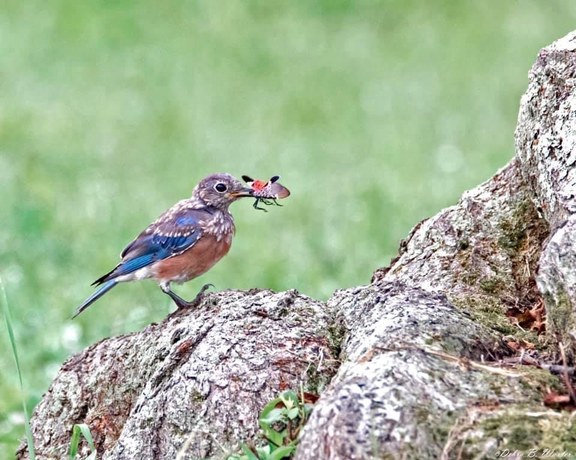Enlisting the help of natural predators to curb the spread of harmful insects.
Problem
How can invasive spotted lanternfly populations be reduced without pesticides?
- The spotted lanternfly is a destructive pest that feeds on more than 100 species of plants and trees. Because the spotted lanternfly is a nonnative insect, it did not arrive in the U.S. along with its natural enemies to keep its numbers in balance, unlike in its native environment of Asia.
Findings
Researchers conducted field and lab experiments to find species in the U.S. that will prey on spotted lanternflies. They recruited the help of citizen scientists, who provided 1,294 photos and observations of birds, insects, and wildlife eating spotted lanternflies.
- Preliminary findings show that the top bird predators are chickens, cardinals, catbirds, blue jays, and the tufted titmouse rounding out the top five. Among arthropods, the major predators were spiders, followed by preying mantises, yellow jackets, wheelbugs, and ants.
Impact
The findings could help citizens take steps to attract these predators because they will help to control not only spotted lanternflies but other pests as well.
Research Credit
Team
- Anne Johnson, Kelli Hoover, Margaret Brittingham, Sara Hermann, Allison Cornell
Participating Departments
Partner
- Penn State Altoona
Federal and State Appropriations
- USDA NIFA McIntire-Stennis Project PEN04755, Accession #1024129
Emerging Discoveries
Office for Research and Graduate Education
Address
217 Agricultural Administration BuildingUniversity Park, PA 16802-2600
- Email agresearch@psu.edu
- Office 814-865-3136
Office for Research and Graduate Education
Address
217 Agricultural Administration BuildingUniversity Park, PA 16802-2600
- Email agresearch@psu.edu
- Office 814-865-3136




